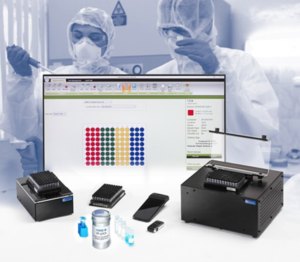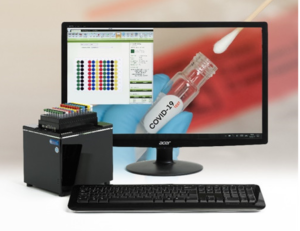Covid-19 sample tracking for private diagnostic labs
With the increasing pressure of widespread testing across many nations around the world, many privately held diagnostic labs are turning their attention to the new possibilities offered by community COVID-19 screening and testing.
By Stephen Knight, MA, Ziath Ltd, Cambridge UK
While the basic principle of using “gold standard” PCR test kits is now well established, there are still some issues surrounding the selection of consumables and the commensurate tracking of patient samples from point-of-sampling through the workflow to an end result. This short article looks at how 2D-bar coded tubes, tube readers and automatic tube selectors can significantly improve workflow automation and thereby reduce costs through quicker processing times whilst simultaneously reducing the risk of cross-sampling or losing samples all together.
One of the key challenges for smaller private testing labs is how to track large numbers of COVID-19 patient samples passing through using technicians who may be unfamiliar with these new protocols. To cope with the vast demand for COVID-19 sample testing, many laboratories have been asked to increase their daily throughput by as much as 10 times their normal workload.
Evolution of sample management
It was the advent of 2D-barcoded tubes that started the evolution of sample management from its basic and rudimentary beginning to the sophisticated tube and sample tracking applications that exist today. Sample management is now thought of as a critical analytical discipline by many organisations. The biggest issue for sample tracking during the current COVID-19 pandemic has been the availability of suitable consumables, followed by the availability of instruments for testing.
In the USA where the scale of the pandemic has been considerable – many individual states have had the demand to test 100,000 samples per day. Therefore, it is not hard to see why if a lab uses 96-well PCR plates for this testing they will need over a 1000 plates per day. Typically, these are sold in cases of 100 plates so that’s 10 cases per day, 50 cases per week. If all 52 states across the USA did that it would be 2600 cases of PCR plates per week. Now add in further demand from Europe, Australia, South East Asia and Africa the task of trying to mould, sterilise, pack and ship that many plates, even distributed across different manufacturers is a major logistical problem. Add to that the liquid handling tips and the RT-PCR and RNA extraction reagents which are also in short supply and the scale of the problem becomes apparent. Consequently, over the past 16 months, there have been regular shortages of the very 2D-barcoded tubes which were so desperately needed to help track large numbers of COVID-19 patient samples. Thankfully, as we move into the second half of 2021 – supply is beginning to catch up with the increased demand for these specialist consumables.
Explosion in sample test numbers
Most private testing laboratories have been challenged by the explosion in sample test numbers where they need to reliably track suspected COVID-19 infected patient swabs to 2D-coded tubes and then through to racks of 96 tubes. For this task a fast scanner that takes and stores high quality images is the preferred solution for establishing a traceable workflow of scanned patient swab tubes through to RT-PCR ready 2D-coded tube samples. As camera-based instruments, the Ziath Cube and Mirage scanners combine high image quality and fast scanning to provide reliable results in just a couple of seconds. The Mirage accepts all SBS-format tube racks, whilst the Cube can additionally accept the larger Cryobox format, making it easy to present coded sample tubes, even when wearing cryoprotective or anti-contamination clothing.
It is also possible to combine 2D bar coded tube readers with 96 position automatic tube selectors, such as the Ziath Mohawk. In this way – smaller testing labs can take advantage of a cost-effective “cherry picking” system for quickly and accurately selecting individual COVID-19 sample tubes from with 96 position tube racks. By linking directly with a camera scanner, the original position of the tube and any new position of the withdrawn tube can be accurately and quickly recorded.
Of course, all this vital sample location data needs to be entered into a LIMS or database of some sort so that the RT-PCR results can be tied directly to the correct patient samples. There are many systems and software available for this. One of the simplest and most cost-effective is the Samples software from Ziath. This basic “What is it?, where is it?” programme is an easy-to-use relational database that can be customised to track samples by any number of user-defined tracking tags, making it easy to find. For example, “all patients with positive RT-PCR result, over 50, who live in Cambridge, MA”.
Watch on YouTube
- To watch both the Cube and Mirage scanners being demonstrated by staff from Ziath, please visit: https://youtu.be/EcmV-AGebnc.
Contact
- For further information on optimized packages for reliable tracking of COVID-19 patient samples, please download the Ziath coronavirus datasheet:
ziath.com/ziath_downloads/ziath_coronavirus_datasheet.pdfor contact Ziath on: +44-1223-855021 / +1 858-880-6920 / info@ziath.com





